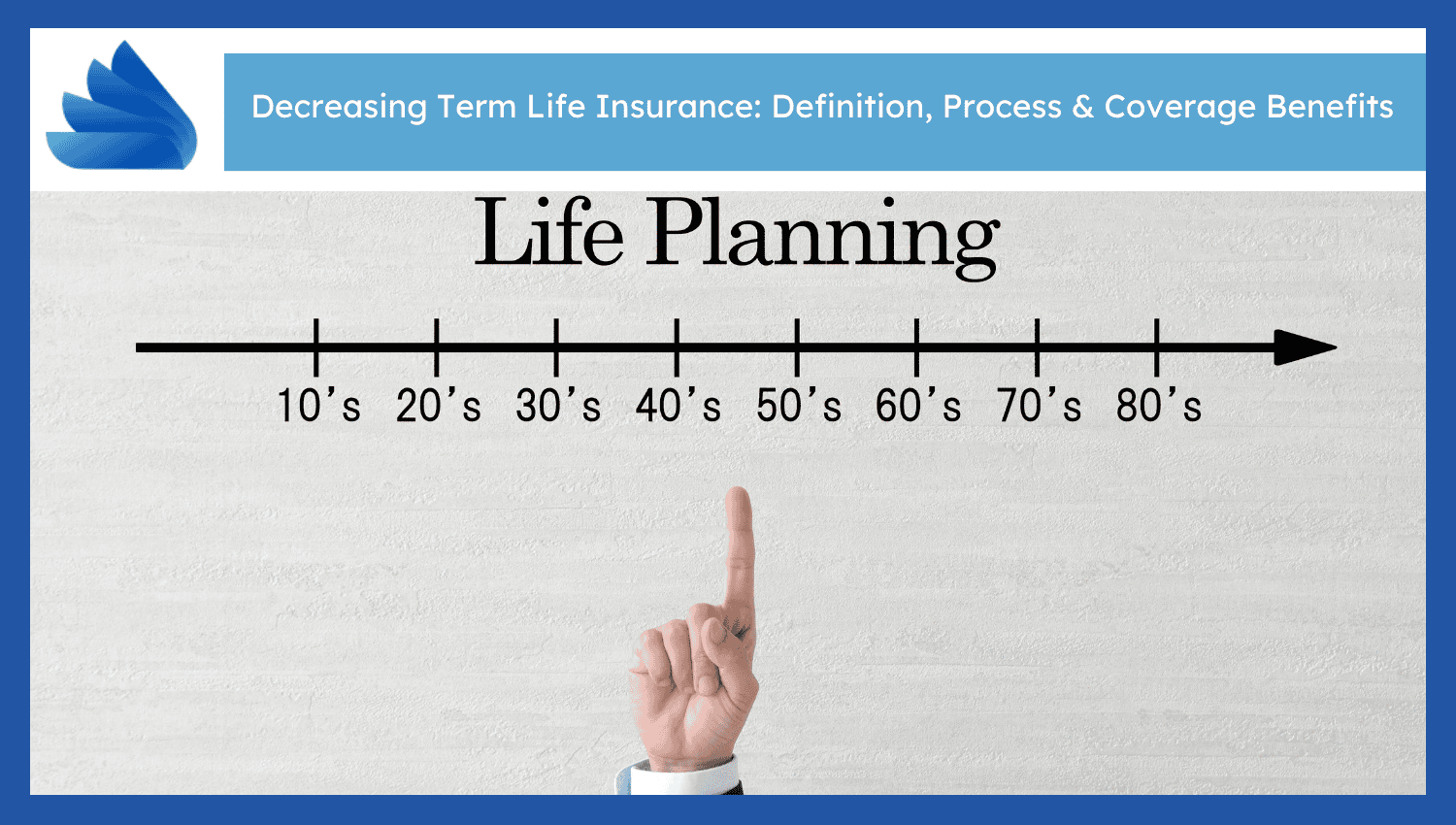
Decreasing Term Life Insurance: Definition, Process & Coverage Benefits
Decreasing term life insurance is a form of renewable coverage where the death benefit gradually reduces over time according to a set schedule. It also keeps premiums at a fixed level. It is a cost-effective insurance option that resembles the amortization of debts as commercial loans or mortgages. Policyholders select both the length of coverage and the initial death benefit amount.
As the loan balance decreases over time, the insurance coverage gradually reduces as well, eventually reaching zero when the loan is fully paid. It is more affordable to purchase than permanent life insurance without cash value accumulation. It has lower monthly premiums, which are 12 to 35 percent less than standard-term plans, particularly for elderly applicants.
Small-business owners also benefit from it; they have to pay for shared obligations or debts. Some lenders require it, particularly mortgage lenders, as a form of collateral protection. However, the limited availability of providers and rigid benefit schedules make it less applicable when compared with standard-term policies.
How Does Decreasing Term Life Insurance Work?
Decreasing term life insurance gives the protection of a specific period, usually 10, 20, or 25 years. In this time, the death benefit is reduced every few years, and premium rates remain the same. Some policies allow renewal, but many do not once the term ends. The decreasing payout reduces the risk of the insurer in the long run, which makes this kind of insurance less expensive than regular term insurance. It is typically used to protect financial obligations that diminish over time, including business loans, mortgages, or the temporary needs of income for dependents. The purpose is to make sure that the debts are paid without burdening the family members. The insurer decides on how much the benefit is reduced, either at a certain percentage each year or in certain amounts regularly. For instance, coverage could be reduced by 100 percent every five years or be in line with a repayment timeframe for loans. The most common use for mortgage protection is to protect your home. frequent application. Mortgage protection insurance (MPI) is a kind of decreasing term coverage that links directly to your Mortgage payoff amount. Some insurers and lenders provide this insurance when you are dead with a loan outstanding, for example $200,000 remaining on the mortgage of $400,000, the insurer will pay the remainder of $1200,000 to the lending institution, which is then utilized to pay off the outstanding debt.What are the Benefits of Decreasing Term Life Insurance
Here are the nine main benefits of decreasing life insurance:- Lower premiums than level term: Premiums cost 10-35% less than level term life insurance. Insurance risk declines with time, becoming less expensive in the process.
- Matches declining debt: The insurance depends on declining debts, such as mortgages or loans. This reduces the risk of paying more than what is necessary.
- Simple and predictable structure: The reduction of benefits is planned. You always understand what coverage is left and what you are paying.
- Bundled with mortgage products: Mortgage protection insurance ( MPI ) is frequently provided as a complement to home loans. It makes application and approval easy for your lender.
- Fixed premiums: The premiums remain fixed even when the death benefit decreases. This facilitates budgeting in the long run.
- Quick underwriting: Underwriting has been simplified on some declining term policies and simplified where bundled with a mortgage.
- Targeted financial protection: It is suitable for people who are temporarily committed, such as business people or potential home buyers, who are required to have coverage when in debt.
- Reduces financial burden on the family: Makes sure outstanding debts are settled, thus loved ones do not feel the financial burden of not settling the financial burden after your death.
- No overinsurance: Avoids overspending during the post-retirement years when money obligations are already lower. You simply pay what you need.
Is Decreasing Term Insurance Right for You?
Decreasing term life insurance is ideal in the following six cases:Ideal if:
- You have a mortgage or fixed loan to cover: The policy is designed to match repayment schedules, reducing coverage as your debt decreases.
- You want affordable short- to mid-term protection: Premiums are lower than level term—often 10–35% less—because the insurer’s liability decreases over time.
- Your financial responsibilities reduce gradually: Suits people whose debts or dependent obligations decline, such as paying off a mortgage or raising children.
- You need coverage tied to a Particular liability: Best for targeted needs rather than broad financial protection.
- You want mortgage protection insurance (MPI): Many lenders offer MPI as a bundled product. It ensures the mortgage is cleared if you die during the term.
- You want to avoid overpaying for coverage: The policy lowers the death benefit in line with your needs, helping avoid unnecessary premium costs.
Not ideal if:
- Need long-term or lifetime coverage: The policy lapses at the end of the term and isn’t renewable or permanent.
- Prefer a fixed payout for beneficiaries: The death benefit reduces over time, which does not support long-term family needs.
- Need broader financial protection: It doesn’t cover expenses beyond specific debts like education or future living costs.
- Want a policy with savings or investment value: Decreasing term is purely protective—there’s no cash value or return component.


